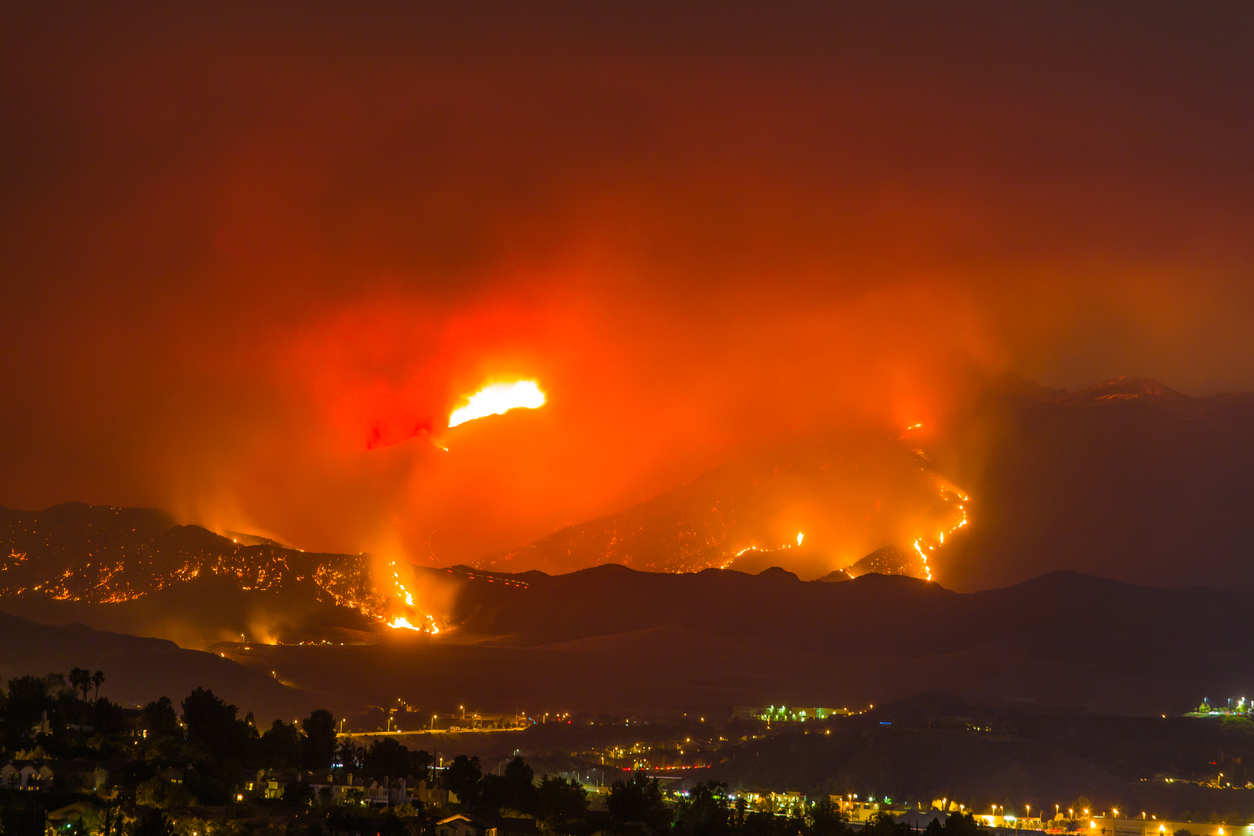The fire in the city of Laguna Niguel started Wednesday afternoon and grew to about 200 acres as it ripped through mansions that sit along parched hillside streets in one of California's most affluent neighborhoods.
Flames swallowed entire homes and burned through to their interiors in one neighborhood, while firefighters hosed down nearby houses on the same street hoping to save them, footage from CNN affiliate KCBS/KCAL showed.
Jennifer McCoy, a Laguna Beach resident, told CNN she first noticed smoke coming from neighboring Laguna Niguel around 4:15 p.m. Less than two hours later, the smoke clouds had ballooned even larger, McCoy said.
"I walked down to the shopping center below and the smoke grew maybe two to three times what it was before," she said.
Meanwhile, firefighters responded to flames at multiple houses in the Aliso Woods Canyon area, photos from CNN affiliate KABC showed.
Firefighting crews resorted to using water from a pond at the El Niguel Country Club in Laguna Niguel to help fight the flames as thick brown and gray smoke blanketed the area.
No civilian or firefighter injuries were reported, Brian Fennessy, fire chief of the Orange County Fire Authority, said during a news conference Wednesday evening.
The fire was fueled by gusty winds that reached up to 30 mph in the area, according to nearby observations from the National Weather Service. That is in addition to dry conditions from an ongoing severe drought in the entire region, according to the latest US Drought Monitor.
The combination of the winds and the widespread dry conditions exacerbated the fire, Fennessy said.
"The fuel beds in this county, throughout Southern California, throughout the West, are so dry that a fire like this is going to be more commonplace," he said. "Five years ago, 10 years ago, a fire like this would've likely been stopped very small."
Crews will be conducting damage assessments overnight and monitoring for hotspots or flying embers that could spark more damaging flames, Fennessy said.
Evacuation orders are in effect for Coronado Pointe Drive, Vista Court and Via Las Rosa in the Pacific Island area of Laguna Niguel, and a reception area for those who evacuated was set up at the Crown Valley Community Center, the Orange County Sheriff's Department said in a news release.
Laguna Niguel resident Allan Aguilera told CNN he and his family decided to evacuate when they saw the scope of the flames from a lookout point in the neighborhood.
"When we reached the top we saw the full scale of how big the fire was and witness how quickly it was spreading," he said. "There were tons of people in the area doing the same, watching the fire before the winds changed and began pushing the flames closer and closer. At that point we decided to leave and go prepare for potential evacuation."
"The situation was incredibly tense but we kept our cool, gathered our most valuable belongings ... and made an early evacuation to avoid any potential bottle necking if the worst case scenario were to play out," Aguilera added.
From its start Wednesday afternoon, the fire grew to 200 acres in just hours despite a strong response from fire officials.
"We have over 60 different types of resources battling the flames," the Orange County Fire Authority said.
Despite the effort, the fire still "ran" on first responders, officials said, primarily driven by the effects of climate change on the region in recent years.
"We're seeing spread in ways that we haven't before. Five years ago, 10 years ago, a fire like that might have grown to an acre, couple acres" before it was under control, Fennessy said. But now, "fire is spreading in this very dry vegetation and taking off."
California and the overall Western region are experiencing devastating drought conditions that have led to water restrictions in parts of the state.
Last summer, California endured its most severe drought in its 126-year record. And the upcoming months aren't getting any better.
Forecasters with the National Oceanic and Atmospheric Administration are expecting "prolonged, persistent drought in the West where below-average precipitation is most likely," the agency wrote in its spring outlook in March.
Late last month, Southern California officials asked businesses and residents in parts of Los Angeles, Ventura and San Bernardino counties to reduce outdoor watering to one day a week.













